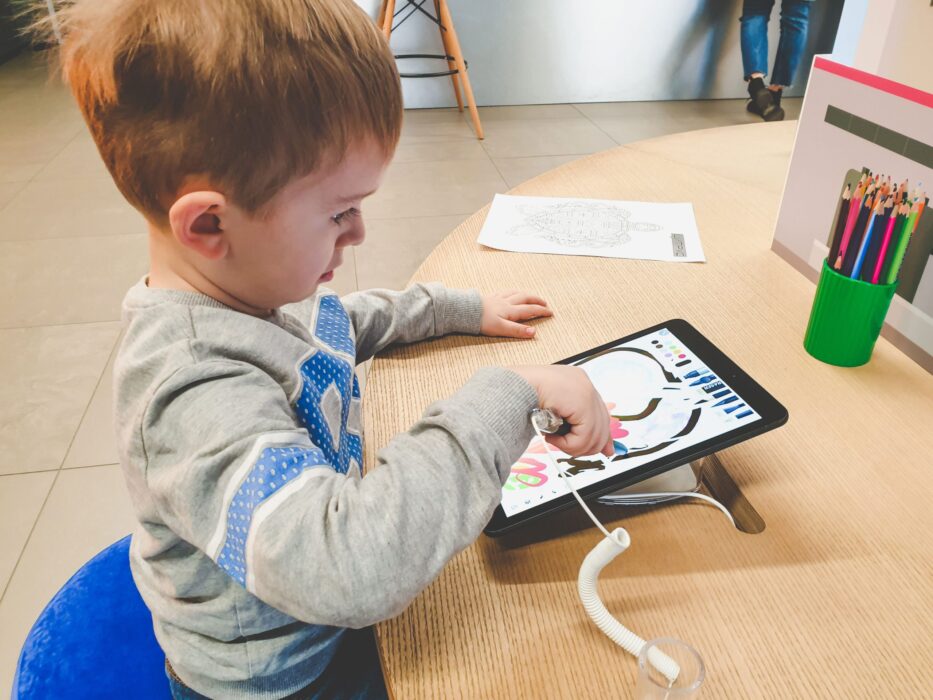In today’s digital age, technology is crucial in everyday life. This is especially true for senior citizens, who greatly benefit from increased technology accessibility. Free phones for seniors can help them stay connected with family and friends, enhance their safety, and improve their overall quality of life. However, embracing technology can be challenging for many older adults. Seniors can successfully tackle these hurdles with the proper assistance and resources, leading to various advantages.
Technology can significantly enhance the daily experiences of senior citizens by simplifying communication and monitoring health concerns. Yet, as beneficial as these tools are, the journey towards embracing them is often fraught with hurdles such as lack of understanding and fear of use. This article explores how technology bridges the gap for seniors, the benefits and challenges of tech adoption among older adults, and practical tips for helping seniors embrace technology.
The Growing Importance of Technology for Seniors
The number of senior citizens is increasing around the globe. The United Nations forecasts that there will be 1.5 billion people aged 65 and older by 2050. This rising demographic underscores the importance of addressing the digital divide, a phenomenon where older adults may need to catch up in technology use compared to younger generations. The digital divide can significantly impact seniors’ quality of life, limiting their ability to communicate, manage health conditions, and access essential information. This gap needs addressing to ensure that older adults are included as the world becomes more technologically advanced.
Tech tools can simplify daily living for older adults. Technology offers multiple benefits, from video calls that enable frequent communication with loved ones to health monitoring devices that allow real-time tracking of vital signs. Organizations advocate for technology that helps seniors stay connected, engaged, and active, mitigating feelings of isolation and loneliness. Beyond social benefits, tech devices can enhance cognitive functions through interactive games and applications stimulating the brain.
Overcoming Barriers to Technology Adoption
Common Challenges Seniors Face
Despite its benefits, many seniors need help with adopting new technology. Common challenges include difficulties in understanding, fear of making mistakes, and limitations such as poor eyesight or limited manual dexterity. These obstacles can make the initial learning curve seem steeper than it is. Moreover, older adults may feel overwhelmed by the rapid pace of technological advancements, believing they cannot keep up.
Support from Family and Caregivers
Family members and caregivers are essential in assisting seniors with technology use. By offering hands-on help and encouragement, they can ease the transition. Being patient and adaptive is critical, as is tailoring explanations to meet the seniors’ pace and comfort level. Regular practice sessions and simple, step-by-step instructions can make a significant difference. Encouraging seniors to ask questions and showing enthusiasm for their progress can boost their confidence and curiosity about new tech.
Educational Resources and Programs
Numerous resources and programs designed specifically for older adults help overcome educational gaps. Community centers, public libraries, and online platforms often offer classes to help seniors become more tech-savvy. For instance, organizations offer workshops and tutorials to instruct seniors on utilizing smartphones, computers, and the Internet. Local governments and non-profits also run initiatives that provide one-on-one tech coaching for older adults.
Essential Tech Devices for Seniors
Smartphones
Modern smartphones have features that make them particularly suitable for older adults. Larger display screens, voice commands, and emergency call functions are among the attributes that make smartphones a utility rather than a luxury. Additionally, seniors can benefit from the many apps designed for their needs. These include health monitoring apps, medication reminders, and social media platforms that facilitate staying connected with family and friends.
Smart Home Devices
Smart home devices like voice-activated assistants, automated lighting, and security systems can make daily activities more manageable for seniors. These tools enhance safety and convenience by allowing older adults to control their environment with minimal physical effort. For instance, smart thermostats can regulate home temperatures to comfort levels without manual adjustments, and intelligent doorbells can provide video footage of visitors, enhancing home security.
Health and Wellness Gadgets
Health and wellness gadgets like fitness trackers and medical alert systems offer significant advantages. These devices can monitor heart rates, track physical activity, and even alert caregivers in an emergency, providing peace of mind to seniors and their families. Wearable technology, like pendants or wristbands with fall detection capabilities, can ensure that help is summoned immediately if an accident occurs.
Practical Tips for Helping Seniors Use Technology
Introducing New Gadgets
When introducing new technology to an older adult, could you keep it simple? Start with one device, explaining its essential features and functionality. Avoid overwhelming them with too much information at once. A gradual introduction allows them to build comfort and familiarity at their own pace. Showing real-life applications, such as placing a phone call, sending a text, or checking the forecast, can emphasize the immediate advantages.
The Role of Patience and Support
Patience is vital when helping seniors adapt to technology. Continuous support and positive reinforcement encourage them to keep learning and exploring new digital tools. Schedule regular check-ins to provide assistance and answer any questions they may have. Using analogies related to familiar experiences often makes tech concepts easier to understand. Celebrating small victories can build confidence and reduce tech-related anxiety.
Creating a User-Friendly Tech Environment
Ensure that the tech environment is senior-friendly. It might include larger fonts, simplified interfaces, and easily accessible help functions. The goal is to create a comfortable and intuitive experience that minimizes frustration. Customizing devices, such as enlarging text and icons or setting up voice-activated controls, can significantly enhance ease of use. Environmental adjustments, like good lighting and a comfortable, quiet workspace, also make a difference.
Real-Life Stories: Seniors Thriving with Technology
There are countless inspirational stories of seniors who have successfully incorporated technology into their lives. For instance, many have found newfound joy in reconnecting with distant family members through video calls, while others have taken up new hobbies by watching online tutorials. Seniors also use social media platforms to join communities with shared interests, from gardening to historical research, further enriching their social lives. Research from the Pew Research Center supports the positive impact of technology on the older population. Many seniors have adopted smartphones, and there’s a growing trend of social media use among this age group. Technology facilitates better social connections and reduces feelings of isolation. The study highlights that seniors who engage with technology are more likely to feel younger and more self-sufficient in their everyday lives.
The Future of Technology for Seniors
The future looks promising for senior tech. Emerging innovations, such as AI companions that provide social interaction and virtual reality used for therapeutic purposes, are set to revolutionize senior care. AI-driven health monitors are becoming more sophisticated, offering advanced diagnostics and personalized health management plans. Virtual reality could provide immersive experiences that combat aging-related challenges, such as cognitive decline and depression, by providing travel, therapy, and social engagement simulations.
Conclusion
In summary, technology offers numerous opportunities to enrich the lives of senior citizens. Despite the barriers, with the proper support and resources, older adults can effectively embrace and benefit from these advancements. Encouraging seniors to stay open to new technologies is essential for their well-being and quality of life. The digital divide can be successfully bridged by fostering an environment of patience, understanding, and consistent support, ensuring seniors enjoy the full spectrum of technological benefits.
Also Read: Discovering the Beauty and Versatility of Linuxia Operating System





